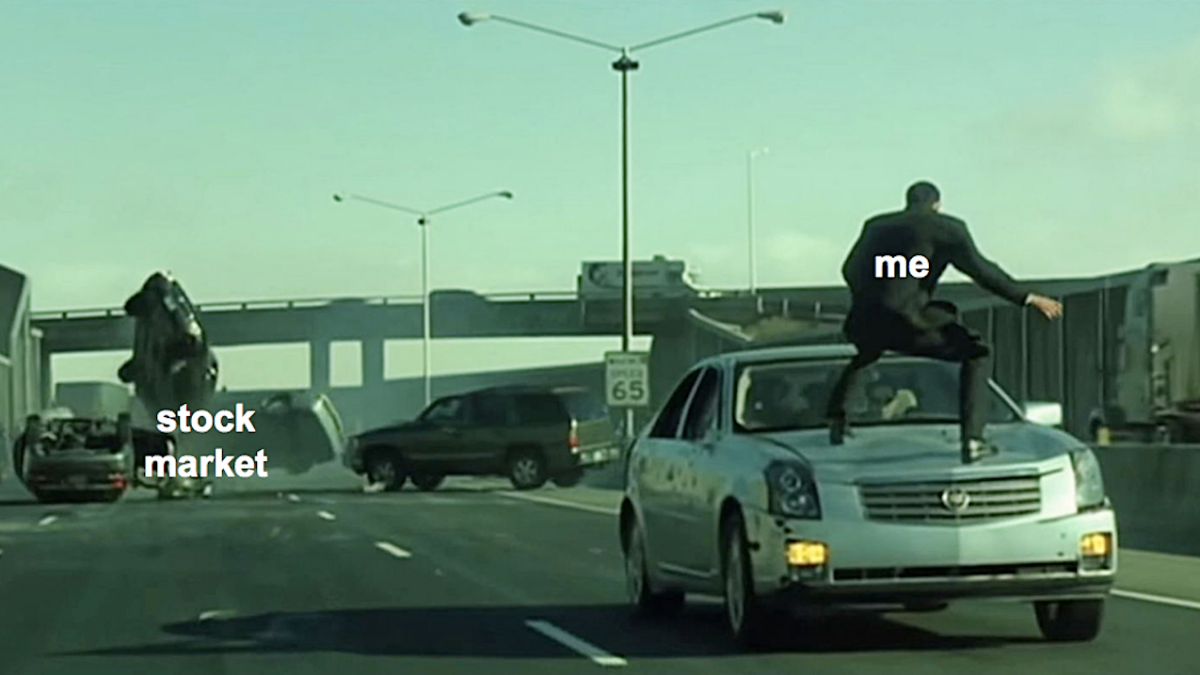
It’s an understatement to say there’s a lot going on in the world right now, and that’s all contributing to 2022’s downward-trending stock market after a 2021 characterised by growth.
But before we get too into the weeds, let’s start with the basics — even if you’re confident you know how a stock market works, a refresher is helpful to really understand how dips and fluxes work.
Wait, What Actually Is A Stock Market?
First, there’s no one universal stock market across the globe, but rather many stock markets operating at once. Having said that, they’re not ‘separate’ either, in that one market’s dips or growths will affect another’s.
In Australia, the Australian Securities Exchange is a public company that runs our largest market, the ASX (though we also have the non-public Sydney Stock Exchange, which is separate).
Meanwhile, a country like the USA has many. Some you’ve probably heard of like the New York Stock Exchange (NYSE), Nasdaq and the Chicago Board Options Exchange, which focus all on different things. For example, the NYSE trades all types of public companies, while Nasdaq mostly trades companies around digital technology and consumer companies, like Tesla, Netflix and Amazon.
An exchange can include ‘securities’, which isn’t just shares but other items like bonds and treasuries, but the stock market is the most public-facing exchange within these. A stock is a stake in a company — to be on the exchange, companies have to ‘go public’, a lengthy and government-regulated process allowing the public to ‘own’ a part of a company and trade that stock, which will increase or decrease in monetary worth.
For example, buying 100 shares in a company such as Ai-Media will make you a stakeholder in that particular company, so what the company does should be something you keep an eye on, as it directly affects your investment.
The stock market includes two major ways of trading: there are individual shares and then ETFs, AKA exchange-traded funds. Instead of investing in one company, an ETF works kind of like a superannuation fund, where your money is handed over to a manager who then invests it. With an ETF, you’re never investing in just one share — instead, your money is split across multiple investments, but your money goes to a single company that tracks those investments for you.
Even though stock markets are public (to everyday people like you and me), it can be pretty intimidating to get on board and start your investing journey. That’s why the Sharesies platform was created. Investment platforms let you buy and trade shares and EFT. On the Sharesies platform, you can access the above US, ASX and NZX markets from a 1c investment.
But Wait, What Do All Those Acronyms Like ASX200 and ASX50 Mean?
When starting out on an investing journey, all these acronyms can be mighty confusing. Terms like the S&P/ASX200 or S&P/ASX50, to use examples from the ASX, refer to indexes, which is a subset of stocks on the market.
S&P/ASX200 refers to the 200 (or so, sometimes it changes) largest companies on the ASX, and S&P refers to credit agency Standard & Poor’s, which maintains the index. If an index drops, the average value of all the stocks is down from the previous day, and vice versa.
So About Crashes…
It’s actually just called Crash, and it’s proving to be Charli XCX‘s breakthrough into the mainstream. Excited for her!
But back to stocks. Generally, ‘market crashes’ refer to a drop of more than 20% across the board, occasionally coinciding with a recession, though the term can be thrown around to describe a single day or week of substantial falls.
That doesn’t mean a drop of 20% is automatically a crash: it could be a correction, where markets readjust after an extended period of inflation and growth before balancing out. Crash refers to the speed — and the likelihood of what’s known as a Bear Market, a period of continual losses across the board.
It’s easy to determine how a crash happened in hindsight, but just a touch harder to predict in advance – and if the last two years can tell us anything, it’s that the world is throwing out every globe-affecting plot device it has.
A few sharp drops on the ASX:XAO (AKA what tracks the top 500 companies in the Aus Security Exchange) in January and February have people speculating, especially as the price of oil faces inflation due to the ongoing Russian invasion of Ukraine.
Historically, a crash occurs in a bubble-bursting moment, where widespread confidence is shaken. This could be because of civil unrest, war, economic crises, disasters and pandemics. Sounds familiar.
What Should You Do In A Crash Or Dip?
Firstly, don’t panic, as rash decisions led by anxiety aren’t ideal. Remember that dips and crashes do happen, as do rises.
How you view a market crash or dip depends on your investment horizon (AKA how long you’re planning to leave your money invested for), your investment objectives and your circumstances.
If you’re working towards enough moolah for a car, for example, you’re probably looking at a short-term investment; if it’s a retirement fund, we’re talking about a long-term plan (10+ years). If you were planning on cashing out your investments soon, a dip could spell bad news, but keeping them for the long haul means you’re less invested in short-term moves or crashes. By reconsidering what you want and how the changes have impacted your investment objectives, you will be able to figure out what the next step is for you.
Whilst hearing about a dip or crash in the media may cause some to freak out, they can also be opportunities for some to diversify their portfolio. First, there is a possibility that you could make a savvy deal while a share is significantly cheaper than it has been. If you believe in a share or company but have been holding off due to the previously high price, this could be the time to invest — but, as always, you need to research and make sure that the investment in its current state is still one that will align to your investing goals.
It’s also an excellent time to reassess your investing strategy. We have a guide to five beginner strategies that are worth checking out. One of the strategies, which is potentially the simplest method, is dollar-cost averaging, which requires the least intervention — even, theoretically, during a market dip.
Ultimately, staying informed is key so you can make the best decision for you. Digest the news, follow leading voices you trust, and be sure you’ve researched the key terms and ideas behind investing — like listening to Unlikely Investors, our eight-part podcast with Sharesies and hosts Lachlan Bradford and Robbie Hicks, known for the excellent Funny Business podcast.



